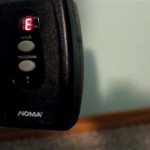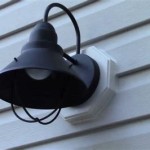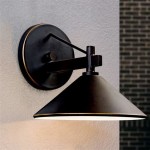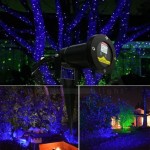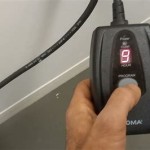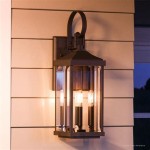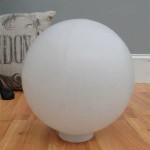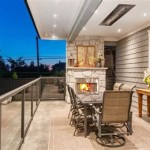Outdoor HPS Lights: A Comprehensive Guide
Outdoor HPS lights, short for High-Pressure Sodium lights, are widely used for various purposes, including street lighting, security lighting, and horticultural applications. These lights emit a bright, yellow-orange light that is particularly effective in penetrating fog and haze, making them ideal for outdoor use. This article will delve into the features, advantages, disadvantages, and applications of outdoor HPS lights, providing a comprehensive overview for potential users.
Understanding HPS Lights
HPS lights operate by passing an electric current through a tube containing mercury vapor and sodium vapor. The high pressure within the tube causes the vapor to ionize, emitting light with a characteristic yellow-orange color. HPS bulbs are typically enclosed in a glass bulb, often with a protective coating to enhance durability and prevent UV radiation from escaping. The bulb is then fitted into a fixture, which typically includes a reflector to focus the light in the desired direction.
HPS lamps are known for their high efficacy, meaning they convert a significant portion of electrical energy into light. This, combined with their long lifespan, makes them a cost-effective lighting solution for many outdoor applications. However, HPS lights also have a few drawbacks, including their relatively poor color rendering index (CRI) and the potential for significant heat output.
Advantages of Outdoor HPS Lights
Outdoor HPS lights offer several advantages that make them a popular choice for various applications:
- High Efficacy: HPS lights convert a large percentage of electrical energy into light, leading to significant energy efficiency and cost savings in the long run.
- Long Lifespan: HPS bulbs typically last for thousands of hours, reducing the need for frequent replacements and minimizing maintenance costs.
- Effective Light Penetration: The yellow-orange light emitted by HPS lamps effectively penetrates fog and haze, enhancing visibility in adverse weather conditions.
- Cost-Effective: The combination of high efficacy, long lifespan, and relatively low initial cost makes HPS lights an economical lighting solution.
- Wide Availability: HPS lights are readily available in various wattages and configurations, catering to a wide range of applications and needs.
Disadvantages of Outdoor HPS Lights
While HPS lights offer numerous advantages, they also have some drawbacks that users should consider:
- Poor Color Rendering: The yellow-orange light emitted by HPS lamps has a low CRI, which can distort the appearance of colors, making them less suitable for applications requiring accurate color rendering.
- High Heat Output: HPS lamps generate significant heat, which can pose a fire hazard if not adequately managed. Proper ventilation is crucial to prevent overheating, especially in enclosed spaces.
- Mercury Content: HPS lamps contain mercury, which is a hazardous substance. Proper disposal procedures are essential to minimize environmental impact.
- Limited Dimming Capabilities: HPS lights typically have limited dimming capabilities, making it challenging to adjust light levels according to usage needs.
- Relatively Slow Startup Time: HPS lights take a few minutes to reach full brightness, which can be inconvenient in some applications.
Applications of Outdoor HPS Lights
Outdoor HPS lights are widely used in a variety of applications, including:
- Street Lighting: HPS lights are a common choice for street lighting due to their high efficacy, long lifespan, and excellent light penetration in adverse weather.
- Security Lighting: The bright, yellow-orange light emitted by HPS lamps effectively illuminates large areas, deterring criminal activity and aiding in surveillance.
- Parking Lot Lighting: HPS lights provide ample illumination for parking lots, enhancing safety and visibility for both drivers and pedestrians.
- Industrial Lighting: The high efficacy and durability of HPS lights make them suitable for industrial applications where reliable and cost-effective lighting is required.
- Horticultural Lighting: While not ideal for the full growth cycle, HPS lights can be used for certain phases of plant growth, particularly during the flowering stage.
In addition to these applications, outdoor HPS lights find use in various other scenarios, such as sports field lighting, construction site lighting, and temporary lighting for events.

Old Style Hps Lights Vs Solar Powered Led

High Pressure Sodium Flood Light General Purpose Outdoor Hps

Sodium Vapor Lamp Wikipedia

How Supplemental Lighting Can Be Used For Outdoor Cans Cultivation

Integrated Multichip Led Grow Lights 800w Full Spectrum High Bay Plant Light

What Are High Pressure Sodium Grow Lights And Do They Home N Gardening Tips

High Pressure Sodium Outdoor 400w Flood Light

Kemi Grow Light Outdoor Plant Lighting Facilitates Fast Growth Singaporehomefurniture

Lighting Comparison Led Vs High Pressure Sodium Low

Sansi 1 Ft 700 Watt Equivalence Black Integrated Led Indoor Full Spectrum Grow Light Cool White 01 03 001 097001 The Home Depot
Related Posts
